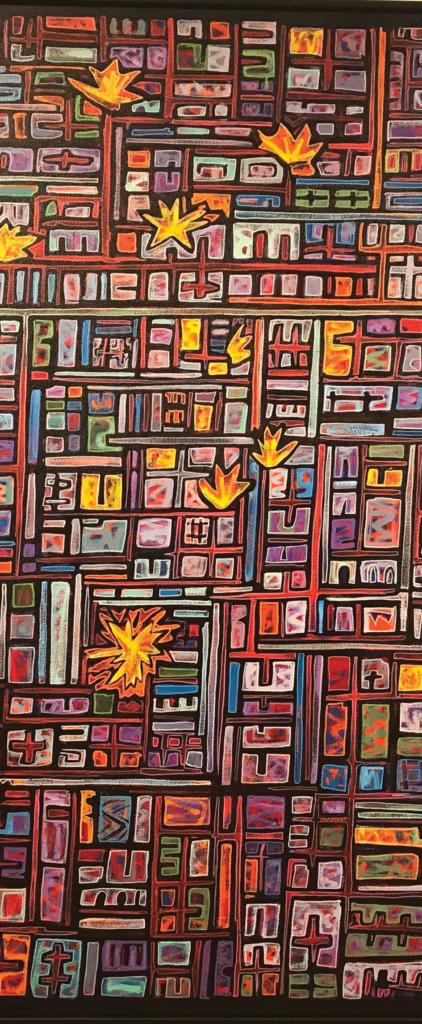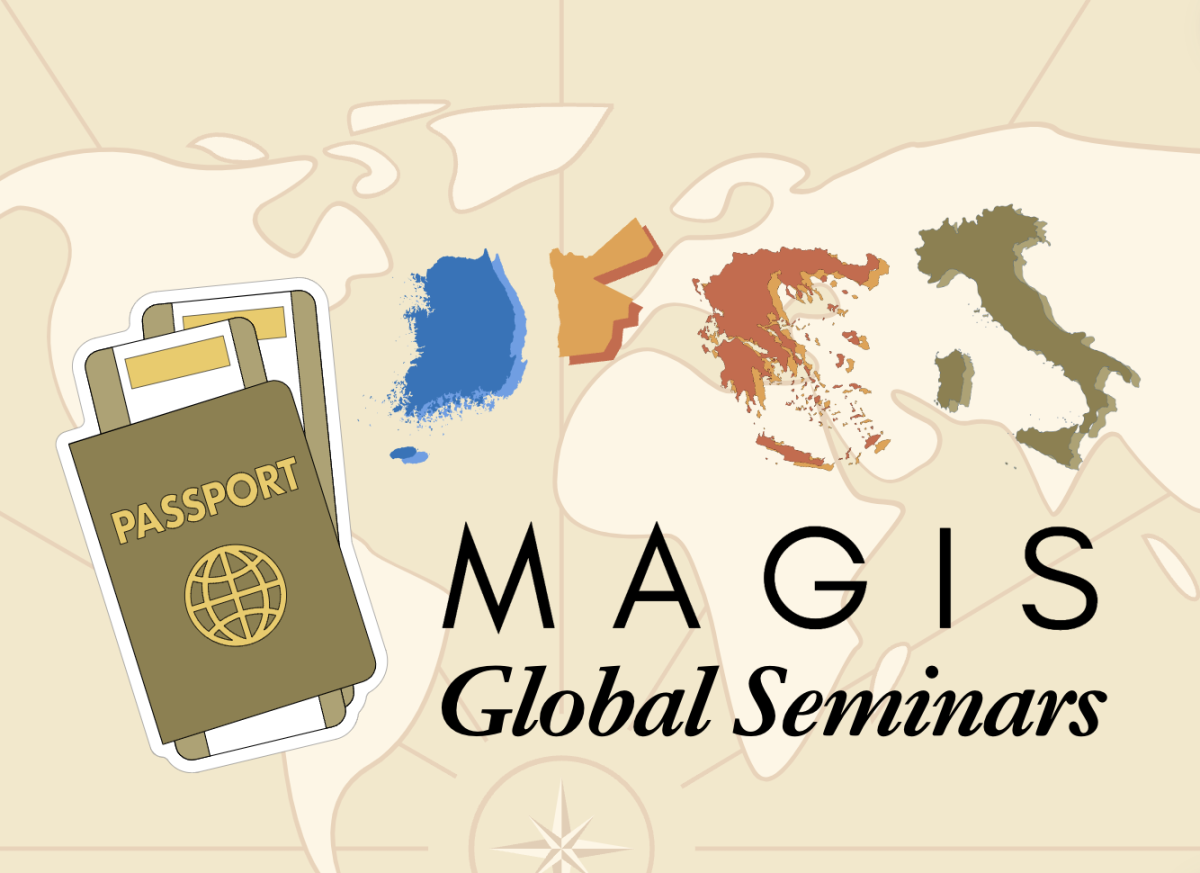Over the last four decades, Chicanx art and Latinx art have grown as artistic currents of the modern American cultural landscape. Mainly founded by Southern California-based Chicanx and Latinx artists, these movements intend to shed light on the economic, political and social disparities faced by Chicanx and Latinx.
In partnership with AltaMed Health Services, a Los Angeles-based community health center, the Mexican Culture Institute presents “Before the 45th: Action/Reaction in Chicano and Latino Art,” an exhibition featuring emerging and established Chicanx and Latinx artists. Dating back as early as the 1970s, these artworks survey an ongoing dialogue shaped by Chicanx and Latinx leaders and their successors about the hopes, dreams and fears of multicultural communities.
“The Mexican Cultural Institute has never shown Chicano art before, an important part of the great nation of Mexican descendants,” Mexican Cultural Institute Executive Director Alberto Fierro said. “Borders are relative in a historical sense, one third of the U.S. used to be Mexico, so there are roots of history featuring these two countries already together.”
The exhibition links past, present and future by exploring the diverse approaches taken by artists to communicate their individual and community needs and to celebrate their multinational identity over time.
“When I first heard the title of the exhibition, I thought it might be perceived as a

provocation. But even if it were, it is still a fact. We don’t know what will happen after the Trump presidency, but we do know what has happened before,” Fierro said.
The exhibition not only looks at the last 40 years of Chicanx and Latinx responses to sociological, educational and financial disparity, but seeks to introduce the Washington, D.C. community to these multicultural identities.
“It is important for the public to be reminded that Latin American culture has been part and parcel of American life since before the U.S. was the U.S.,” AltaMed Collection Curator Julian Bermudez said. “Contemporary Latino culture has been informed by this marriage between the U.S. and Mexico and the children that it has borne.”
Some of the artists make use of political symbols to depict conflict in their work, analyzing and contesting stereotypes of Chicanx and Latinx through satire and humor.
Mexican-American graffiti artist Man One presents “Alienation,” a work based on the wordplay between alien and alienation.
“There is a big segment of the population who uses terms as ‘illegal aliens’ for Mexicans coming into the U.S., basically, not even recognizing them as humans,” Man One said. “My initial thoughts came from the recent rhetoric I had been hearing. There is a big, fat character sitting on the wall, deciding who gets to come over or not.”
Late Chicano artist and activist Melesio Casas employed political insignias as well as verbal and visual puns to create large-scale paintings that came to be known as “humanscapes.”
“While he had very strong political beliefs and conducted very strong political analyses, his work remained largely layered and symbolic. There was a degree of complexity and always a degree of humor, he thought of himself as a satirist,” said Ruben Cordova, curator and friend of Casas.
Cordova believes that while Chicanx and Latinx artists have disseminated more holistic perspectives on their multicultural identity, there is still progress to be made.
“Mel probably expected acceptance to come a lot quicker than it did. There are still very basic struggles for rights. People wouldn’t have really foreseen the Trump effect, hostilities to Mexicans, Mexican-Americans and immigrants in general,” Cordova said. “In a sense, we’ve had a lot of regression, rather than progress. Everybody was very hopeful in the heyday of the Chicano movement and expected for all the gains to be permanent instead of always threated, always reversible.”
Los Angeles-based artist Jose Ramirez emphasizes the social and political implications of Chicanx and Latinx art as a vehicle used by the Mexican and Latinx communities who feel unheard.
“With lot of the stuff that happened with [the Deferred Action for Childhood Arrivals program], I saw a lot of people using art, both artists producing works for marches and audiences posting and distributing art as a form of protest,” Ramirez said. “Art is a strong, powerful tool.”
While Ramirez celebrates color in his depictions of life in the Latinx neighborhoods of Los Angeles, his art also contains a forceful critique of marginalization within these spaces.
“My work is a mirror of what I grew up around. You can’t avoid being a political artist as a Chicano artist. Art is a political act whether you want it to be or not,” Ramirez said. “Being conscious of what is going on, is hard not to be somebody who is critical of the way people of color have been oppressed; Latinos, Chicanos, immigrants at this point as well.”
Other artists, such as actor and painter Pepe Serna, express the candor and warmth of Mexican folklore.
“I celebrate color. My protest is about color. My great-grandmother was an incredible storyteller and I hoped to transmit the emotion, the color from her stories about Mexico through my art,” Serna said.
Inspired by his relationship with his wife, Serna mixes pre-Hispanic symbols and vibrant patterns in lively portraits of couples.
“My work is happy, it’s a feel-good when you look at it. The spirit of my art is great people are great people everywhere and jokes are jokes everywhere you go,” Serna said.
First-generation Mexican-American artist Ana Serrano considers herself part of both cultures. She believes in the power of art to foster dialogue.
“Art is a conversation starter. It engages the viewer and asks the viewer to analyze, question and reflect on culture,” Serrano said. “Even before Trump became president, racism and marginalization have existed. But I think now, people are looking for more answers. It is crucial to continue this work, particularly during this administration.”
Art is a vehicle of expression, change and unity. This exhibition introduces a form of American art that is still relatively young, while offering audiences the chance to engage with Chicanx and Latinx voices from different times.
With a wide range of landscapes, portraits and photos, the exhibition has something for everyone who wishes to embark on the richly colored, emotional and challenging journey of Chicanx and Latinx in the United States.
“Before the 45th | Action/Reaction in Chicano and Latino Art” is a free exhibition on view at the Mexican Cultural Institute, located at 2829 16th St. NW, Washington, D.C. The exhibition is available for viewing Sept. 5 to Dec. 29, 2017.



















